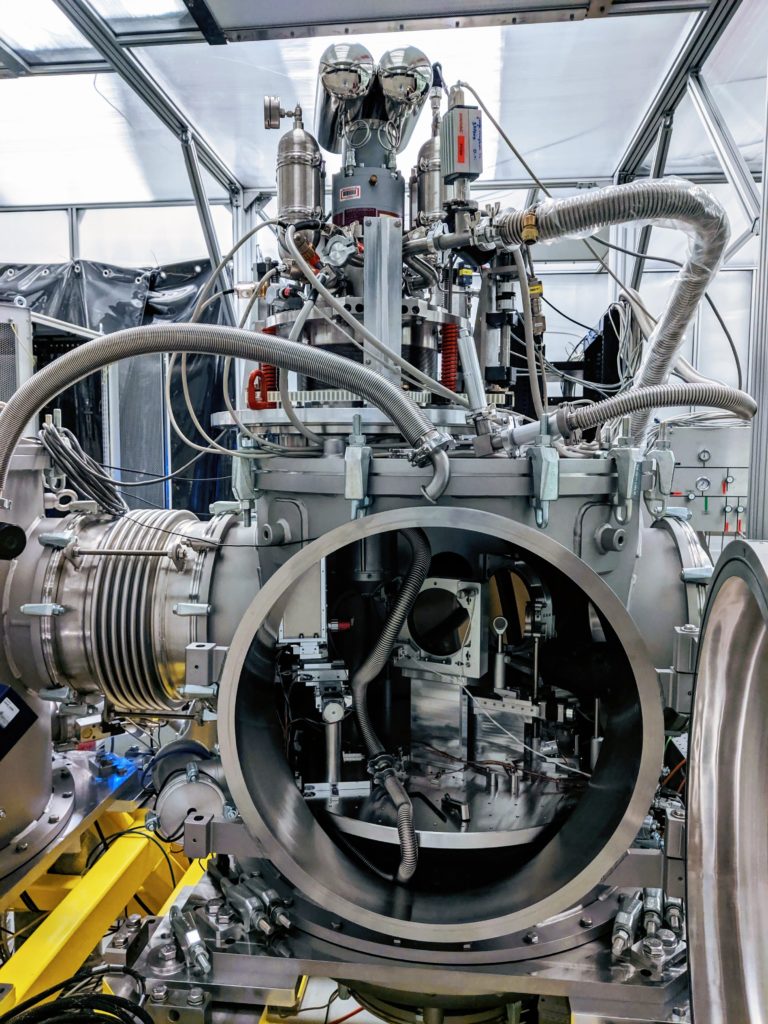
Solid hydrogen ribbon as a renewable laser-driven source of pure proton beams
An article titled ‘A Cryogenic Hydrogen Ribbon for Laser Driven Proton Acceleration at Hz-Level Repetition Rate’ was published in Frontiers in Physics by ELI Beamlines scientists and the ELISE (Experiments on Laser Interaction with Solid hydrogEn) target delivery system. The work was supported by the IMPULSE project, carried out in the framework of Work Package 3 (Ramping–up Towards Excellent Steady-State Operations).
The article reports on recent progress in deploying a continuous solid hydrogen ribbon as a debris-free and renewable laser-driven source of pure proton beams generated by a 30-fs laser with ~1-J laser energy focused on the target at relativistic intensities of ~1019 W/cm2 and repetition rate of 0.1 Hz.

Over the last decades, the rapid development of high peak power (0.1–1 PW) femtosecond laser systems with repetition rates (up to 10 Hz) have triggered rapid progress in new research fields such as laser-driven ion acceleration. The experimental mechanism, known as target normal sheath acceleration (TNSA), achieves high-energy electrons by the laser pulse on the front surface of the target by generating ultrahigh space charge fields. Consequently, the ions are pulled off the target surface by the escaping electron cloud and accelerated to tens of MeVs in a few micrometers. This source’s peculiarity is beneficial for a range of applications as radiobiology for pre-clinical studies of alternative proton therapy approaches or compact neutron generation. However, Hz-level repetition rate operation is very challenging in terms of target fabrication, since the target needs to be renewed up to 10 times per second. Besides, target assemblies have to supply a high number of shots before the reloading process which is typically time consumable.
The ELISE (Experiments on Laser Interaction with Solid hydrogEn) target delivery system provides an alternative approach to the production of a continuous flow of solid hydrogen. In the article, the team reports on a proof-of-principle demonstration of proton acceleration with cut-off energies up to 1.5 MeV using a 100-μm thick hydrogen ribbon at Hz-level repetition rate.
This work results from an extended collaboration between the Department of Ion Acceleration and Applications of High Energy Particles, ELI Beamlines, the Institute of Physics, CAS, Dolní Břežany, Czechia, the Université Grenoble Alpes, and CEA IRIG-DSBT, Grenoble, France.
“Further development of this technology will allow using of solid hydrogen targets on daily basis for the community operating laser-driven secondary sources (protons, ions, neutrons, etc.) at a high repetition rate (1–10 Hz) using 10–100 TW class lasers systems,” says Timofej Chagovets Ph.D., scientist of the Department of Ion Acceleration and Applications of High Energy Particles at ELI Beamlines and primary author of the publication. “I am currently working on several projects related to laser-driven ion acceleration from liquid and cryogenic targets with the ability to produce fresh targets for kHz laser operation.”
The article was published in Frontiers in Physics,31 January 2022 |https://doi.org/10.3389/fphy.2021.754423.